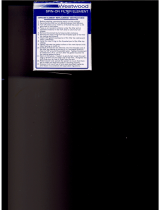
STIHL 009, 010, 011 7
The construction of the clutch is
identical on both models of the saw
(with and without chain brake).
While the engine is running at idle
speed there is no change in the
shape of the clutch, i.e. its outside
diameter remains constant because
the rigidity of the laminate block's
smallest cross section is greater
than the centrifugal force applied.
As engine speed increases the outer
diameter of the clutch becomes
larger when the centrifugal force
overcomes the rigidity of the
laminate block. This causes the
clutch to be pressed against the
clutch drum and thus transmit engine
torque positively via the clutch drum
and the chain sprocket to the saw
chain.
The rigidity of the clutch is designed
so that the clutch begins to make
contact with the clutch drum at an
engine speed of approx. 3200 r.p.m.
The clutch engages fully above this
speed. It is therefore very important
to set the carburetor to the correct
idle speed in order to insure that
the clutch engagement speed
(3200 r.p.m.) is not reached when
the engine is idling.
The transmission of power from the
engine to the saw chain is effected
via a centrifugal clutch which has no
linings.
The clutch consists of a laminate block
made up of seven separate metal
sheets which are riveted together. The
laminate block is screwed to the
crankshaft. A cranked U-plate is fitted
between the laminate block and the
clutch drum and acts as a guard which
prevents parts of the clutch coming
adrift in the event of breakage.
Clutch with cranked U-plate in position Component parts of clutch
2. CLUTCH,
CHAIN DRIVE AND
CHAIN BRAKE
2.1 Construction
and Operation
2.1.1 Clutch and
Chain Sprocket






















